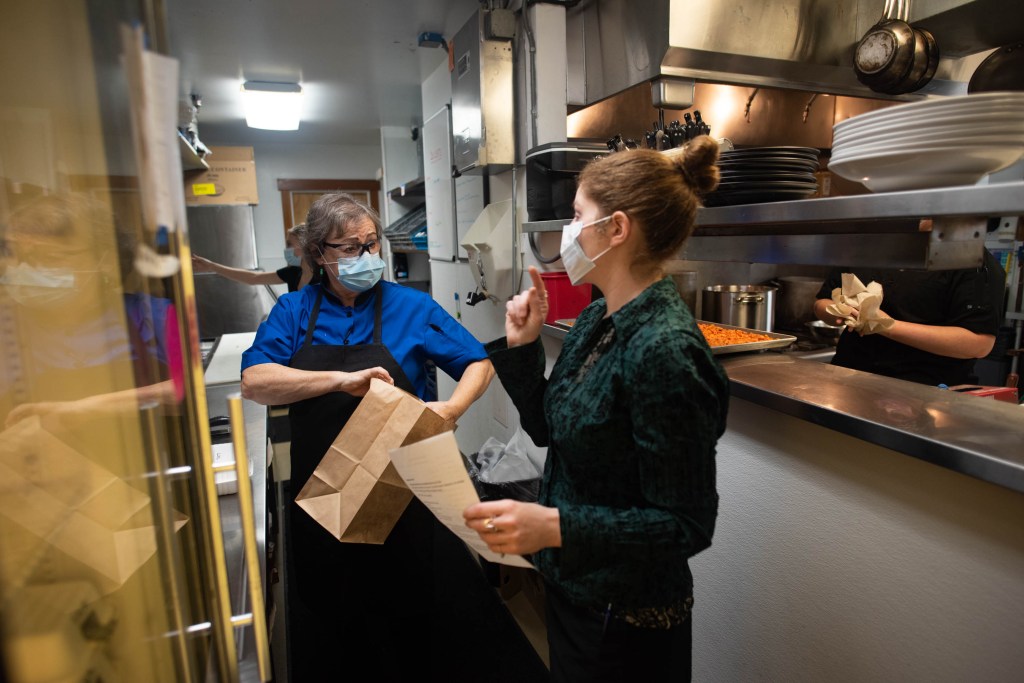State adjusts virus restrictions on county
Published 4:30 pm Tuesday, December 1, 2020

- Bridgewater Bistro owner and pastry chef Ann Kischner, left, works with kitchen and wait staff to organize Thanksgiving to-go boxes.
Clatsop County’s restaurants and bars can reopen Thursday to indoor and outdoor dining at limited capacity, along with other businesses that closed during Gov. Kate Brown’s two-week freeze to contain the coronavirus.
The rules are outlined in the governor’s new data-driven framework that assesses risk in each county and applies a set of restrictions depending on risk level — lower, moderate, high or extreme.
Clatsop County was one of five counties categorized Tuesday as high risk after the most recent county data was examined. Twenty-five counties, including Multnomah County, the state’s largest by population, are at extreme risk.
“As difficult as it is during this holiday season, we continue to urge people to limit their social engagements, and keep following the guidelines for distancing and personal hygiene,” Clatsop County said in a statement. “If our case numbers continue to climb, the county could be placed in the more restrictive extreme risk category, so please do your part to help control the spread of the virus.”
The county’s risk level will be reevaluated every two weeks and can change depending on the rate of cases per 100,000 people and the percentage of test positivity over 14 days.
Counties with more than 30,000 people are categorized as high risk if they have between 100 and 200 cases per 100,000 and between 8% and 10% test positivity over 14 days.
Between Nov. 15 and Nov. 28, Clatsop County had 147.5 cases per 100,000, and 6.7% test positivity, according to the Oregon Health Authority.
While the county is at high risk, indoor social gatherings will continue to be limited to six people from two households. Eight people can gather outside.
Indoor dining at restaurants and bars will be limited to 25% of capacity — or up to 50 people — with an 11 p.m. closing time. Outdoor dining will be allowed for up to 75 people, with a limit of six people a table from two households.
Gyms, indoor pools, museums, theaters and other entertainment venues can operate at 25% of capacity, or up to 50 people, whichever is smaller.
Grocery stores, pharmacies, retail shops and shopping malls can operate at 50% of capacity.
Churches can open at 25% of capacity or 150 people indoors, whichever is smaller, and 200 people outdoors.
Businesses should urge employees to work remotely.
Visits will be allowed in long-term care facilities.
For counties at moderate or lower risk, indoor and outdoor dining and recreation activities, social gatherings, churches and stores can operate at increased capacity.
For counties at extreme risk, indoor dining and indoor recreation and entertainment facilities will remain closed.
Capacity for outdoor recreation and entertainment facilities and churches is lower for counties at extreme risk, and visits inside long-term care facilities are prohibited.
“I want to stress that there is no zero-risk category,” Brown said in a statement. “Until COVID-19 vaccines are widely available and we have high participation, health and safety precautions will remain in place so that schools, businesses and communities can reopen—and stay open.
“I am asking all Oregonians to take these measures seriously. The best way to protect those closest to you is by maintaining physical distance from others, avoiding gatherings, wearing a face covering, staying home when sick and keeping up with good hand hygiene.”


